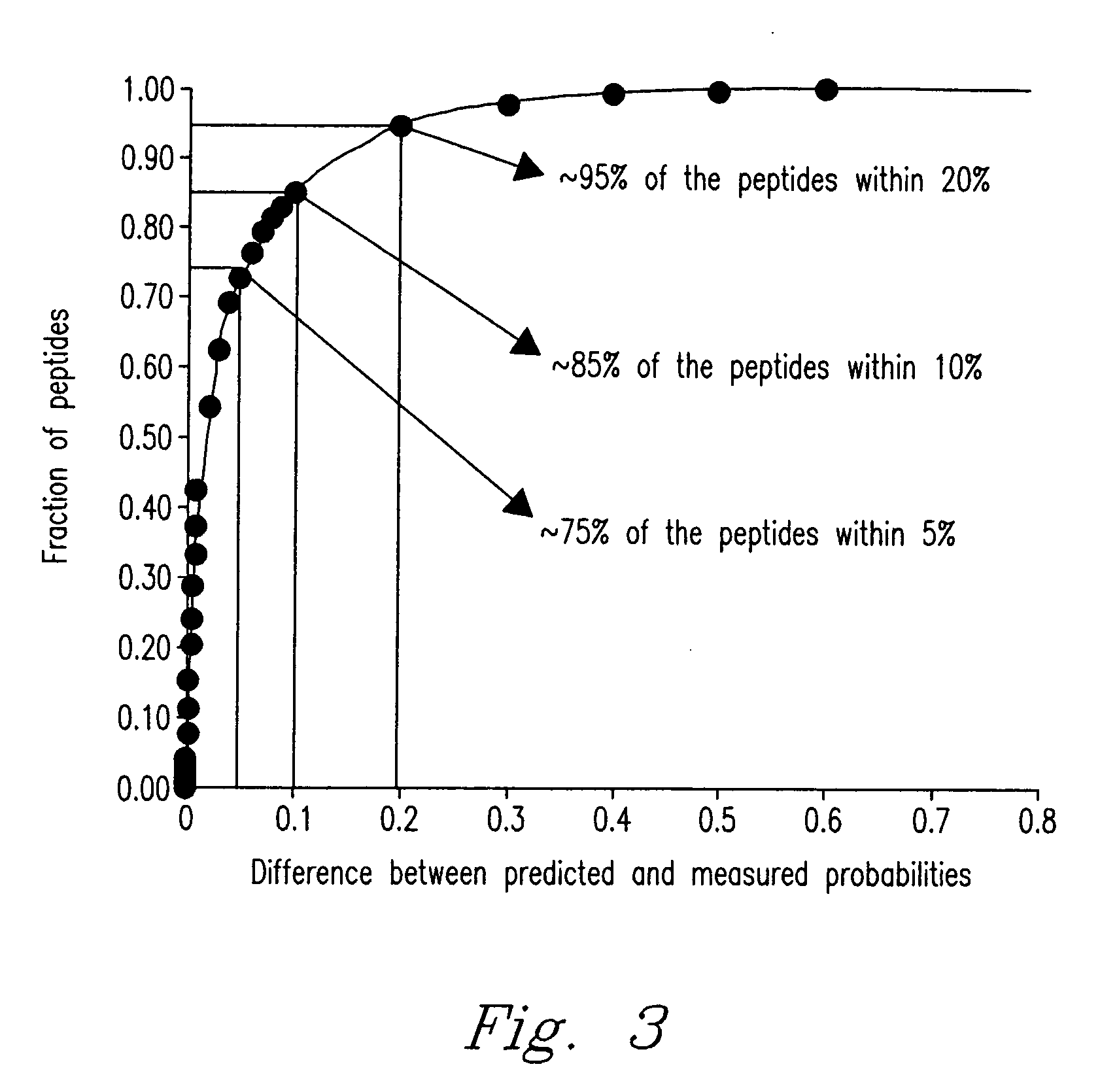Method for predicting peptide detection in mass spectrometry
a mass spectrometry and peptide technology, applied in the field of mass spectrometer based methods, can solve the problems of large amount of data easily produced, data suffers from spectrum quality variations, and the accuracy of accurate identification in “bottom-up” proteomics is significant, so as to reduce the rate of both false positive identification and false negative identification.
- Summary
- Abstract
- Description
- Claims
- Application Information
AI Technical Summary
Benefits of technology
Problems solved by technology
Method used
Image
Examples
Embodiment Construction
[0047] For the purposes of promoting an understanding of the principles of the invention, a series of experiments were conducted wherein one embodiment of the invention was demonstrated and reduced to practice.
[0048] Peptide identifications from a number of different bacterial organisms and from an array of studies were used to train and test the artificial neural network (ANN). Table 1 lists the bacteria and cites published studies providing the detailed sample preparation for each organism.
TABLE 1Organisms from which the peptides were identified,number of LC-MS / MS analyses for each organism, number oftotal spectra, redundant peptides identified from each organismbefore any filtering and the number of filtered distinct peptides.# of LC-TotalUnfilteredFilteredOrganismMS / MSspectrapeptidespeptidesD. radiodurans351,031491,43756,70821,616G. mettallireficens107400,29254,59521,277G. sulfurreducens791909,73085,35826,446R. sphaeroides1,047432,45057,92022,495S. tyhpimurium4921,692,917116,...
PUM
| Property | Measurement | Unit |
|---|---|---|
| Dimension | aaaaa | aaaaa |
Abstract
Description
Claims
Application Information
 Login to View More
Login to View More - R&D
- Intellectual Property
- Life Sciences
- Materials
- Tech Scout
- Unparalleled Data Quality
- Higher Quality Content
- 60% Fewer Hallucinations
Browse by: Latest US Patents, China's latest patents, Technical Efficacy Thesaurus, Application Domain, Technology Topic, Popular Technical Reports.
© 2025 PatSnap. All rights reserved.Legal|Privacy policy|Modern Slavery Act Transparency Statement|Sitemap|About US| Contact US: help@patsnap.com



